In today’s cryptocurrency market, there are a variety of exchanges to choose from. These exchanges can vary in fee structure, security, ease of use, etc.
When accounting for all of these factors, Coinbase vs Kraken stands out as two of the most high-profile, trusted platforms on the market. And while Coinbase might be more well-known (especially in the United States), a variety of alternative exchanges, like Kraken, have their value.
Traders have flocked to both of these exchanges because of their ability to provide around-the-clock cryptocurrency trading and investing for all. But key differences between these two exchanges are important to consider before leaping.
Because every trader is different, there is no one size fits all model for cryptocurrency exchanges. One exchange will have advantages that might matter to some traders but will be less important for others.
A quick note before we begin: For comparison’s sake, we will be using Coinbase Pro, and not the basic Coinbase consumer platform, to compare with Kraken. Coinbase Pro is the company’s advanced platform that even basic traders utilize the most due to additional features and reduced trading fees.
A Brief Look at Coinbase and Kraken
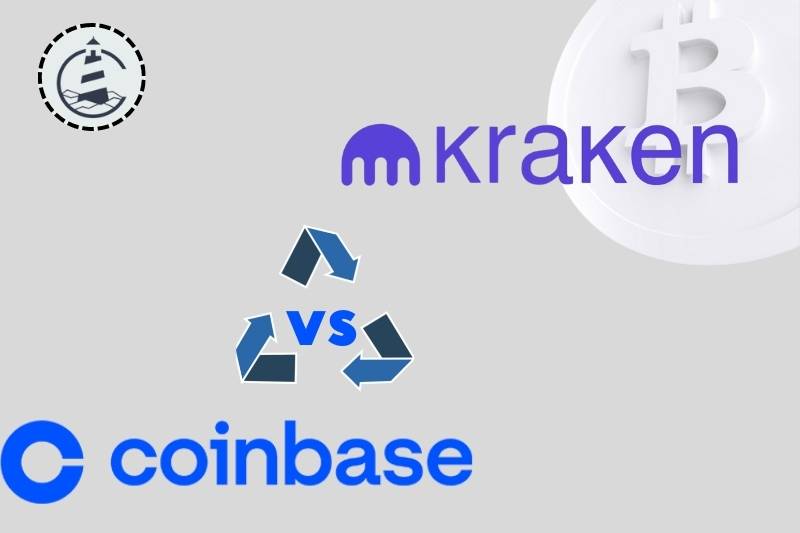
Coinbase
Founded in 2012, Coinbase immediately became a top player in the cryptocurrency industry. The American company was initially part of the Y Combinator startup incubator, where it formulated the prototype for the exchange.
Coinbase has grown substantially since its inception, with its 1,123 employees serving 32 countries and generating over $2 billion in yearly revenue. Coinbase has received $547 million in funding from professional investors like Andreessen Horowitz, Union Square Ventures, and the New York Stock Exchange.
Coinbase has formed its venture capital fund, Coinbase Ventures, which invests in cryptocurrency-related startups. The company also has acquired several companies of its own to integrate new features and functionality into the platform. Since November 2020, Coinbase has made 13 acquisitions, ranging from blockchain intelligence to cryptocurrency-based rewards companies.
On April 14, 2021, Coinbase became the first U.S.-based cryptocurrency exchange to go public. Trading under the symbol COIN, shares of Coinbase opened for trading at $381, giving the company a valuation of almost $100 billion.
Coinbase announced its first-quarter results on May 13, 2021. The results were roughly in-line with projections.
Coinbase mentioned that it would be listing Dogecoin (DOGE) in the next 6-8 weeks. Dogecoin has been one of the best crypto over the past few months, which Robinhood has profited from.
There should be little surprise that Coinbase would like to get in on that action. In the future, Coinbase plans to list new cryptocurrencies faster so that it doesn’t lose out on potential revenue to competitors like Kraken and Robinhood.
Kraken
Kraken was founded in 2011 as one of the earlier cryptocurrency exchanges to buy Bitcoin. Founder Jesse Powell saw the need for a new exchange to replace the recently hacked Mt. Gox, which controlled most of the cryptocurrency exchange market at the time. Two years later, the exchange launched and initially only offered to trade between Bitcoin (BTC), Ethereum (ETH), Cardano (ADA), Litecoin (LTC), and the Euro.
After its early success, Kraken received venture capital funding and was able to expand its operations. In four total fundraising rounds, Kraken has been funded with $118.5 million from cryptocurrency investors like Blockchain Capital and Digital Currency Group, among others. Its most recent fundraising round came in the form of equity crowdfunding.
In June 2019, the exchange raised $13.5 million from 2,263 individual investors, a divergence from the venture capital fundraising model the company had used up until that point.
The exchange was a key player in helping Mt. Gox users obtain their stolen Bitcoin. The exchange oversaw the liquidation of Mt. Gox, which returned any available funds to creditors. All told, $60 million worth of Bitcoin and Japanese Yen were returned to customers.
Today, Kraken boasts over 200 crypto pairs and nearly 50 cryptocurrencies, including best crypto like BTC, ADA, LTC, LINK, LRC and more. Because of its origin in Europe, Kraken is still a bigger name in that region than it is in the United States.
Read more: Litecoin Vs Bitcoin Comparison: Which Should You Invest 2023?
Whose Security Is More Reliable?
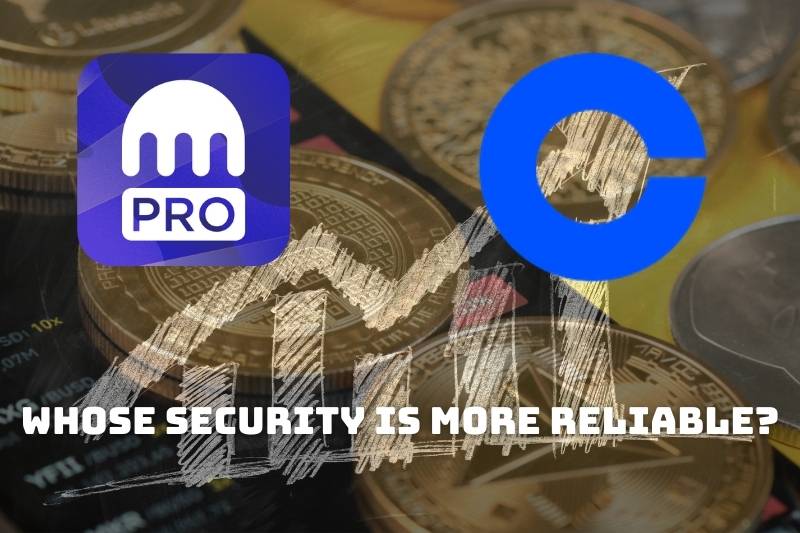
Coinbase has been very vigilant about its security since its inception. To date, there has not been a successful direct attack on the Coinbase platform. Instead, attackers have tried to steal cryptocurrency through elaborate phishing attempts using social media and other methods.
The company was able to halt $280,000 in Bitcoin transactions when hackers overtook several famous Twitter accounts and solicited funds from unsuspecting followers. Outside of these attempts, Coinbase has been as secure of exchange as possible.
Also worth noting, in 2019, Coinbase rolled out Coinbase Custody, which stores cryptocurrency assets completely offline in cold storage wallets.
The only security threat experienced by Kraken was back in 2016 when some of its accounts were compromised by hackers. Yet, the reported attack only amounted to a few hundred dollars in theft and didn’t appear to amount to anything further. Since that time, Kraken has taken security very seriously.
The cybersecurity team at the exchange, known as Kraken Security Labs, unearthed a vulnerability in the Trezor hardware wallet earlier this year, providing a service to the entire industry in the process.
Verdict: Both exchanges provide top-notch security to traders. You likely can’t go wrong with either Kraken or Coinbase regarding security. Users can secure their investments with several method provided by Kraken and Coinbase like 2-Authentication-factor (2FA), etc.
Who Has Better Fees?

Cryptocurrency exchange fees can be the difference between a good trade and a great one and between a winning trading and a losing one. Fees can easily eat into profits and exacerbate losses, especially when they come as a surprise.
Coinbase Fees
| Pricing Tier | Taker Fees | Maker Fees |
| <$10K | 0.50% | 0.50% |
| $10 – 50K | 0.35% | 0.35% |
| $50 – 100K | 0.25% | 0.15% |
| $100K – 1M | 0.20% | 0.10% |
| $1- 10M | 0.18% | 0.08% |
| $10 -50M | 0.15% | 0.05% |
| $50 – 100M | 0.10% | 0.00% |
| $100 – 300M | 0.07% | 0.00% |
| $300 – 500M | 0.06% | 0.00% |
| $500M – 1B | 0.05% | 0.00% |
| $1B+ | 0.04% | 0.00% |
Source: https://help.coinbase.com/en/pro/trading-and-funding/trading-rules-and-fees/fees
When executing cryptocurrency trades on Coinbase, it makes more sense to utilize Coinbase Pro to reduce trading fees. On Coinbase Pro, as with most crypto exchanges, trading fees depend on your trailing 30-day trading volume and maker/taker status.
It starts at a fee of 0.50% for both market makers and takers and goes down to 0.04% for takers and 0% for makers for the most active traders. Coinbase charges a 1% fee to convert crypto into fiat for withdrawal from the platform. ACH deposits are free, while it will cost 1.49% for a bank transfer on Coinbase.
Kraken Fees
| 30- Day Volume | Maker | Taker |
| $0 – $50,000 | 0.16% | 0.26% |
| $50,001 – $100,000 | 0.14% | 0.24% |
| $100,001 – $250,000 | 0.12% | 0.22% |
| $250,001 – $500,000 | 0.10% | 0.20% |
| $500,001 – $1,000,000 | 0.08% | 0.18% |
| $1,000,001 – $2,500,000 | 0.06% | 0.16% |
| $2,500,001 – $5,000,000 | 0.04% | 0.14% |
| $5,000,001 – $10,000,000 | 0.02% | 0.12% |
| $10,000,000+ | 0.00% | 0.10% |
Source: https://www.kraken.com/en-us/features/fee-schedule
On Kraken, the lowest volume traders pay a 0.16% maker fee and 0.26% taker fee, while the highest volume traders pay no maker fee and 0.10% taker fee.
Crypto deposit and Kraken withdrawal fees vary depending on the cryptocurrency in question, but are generally free for the most-used cryptocurrencies. Fiat deposits can be free if using a bank or wire transfer, while fiat withdrawals cost anywhere between $4 and $40 depending on the withdrawal method.
Verdict: Both Kraken and Coinbase platforms provide the same tiered structure for cryptocurrency trading fees, but kraken transaction fees are better overall, especially for lower-volume traders. Combine this with a flat rate withdrawal fee, and it seems that Kraken has a slight advantage regarding fees.
What About Margin Trading?
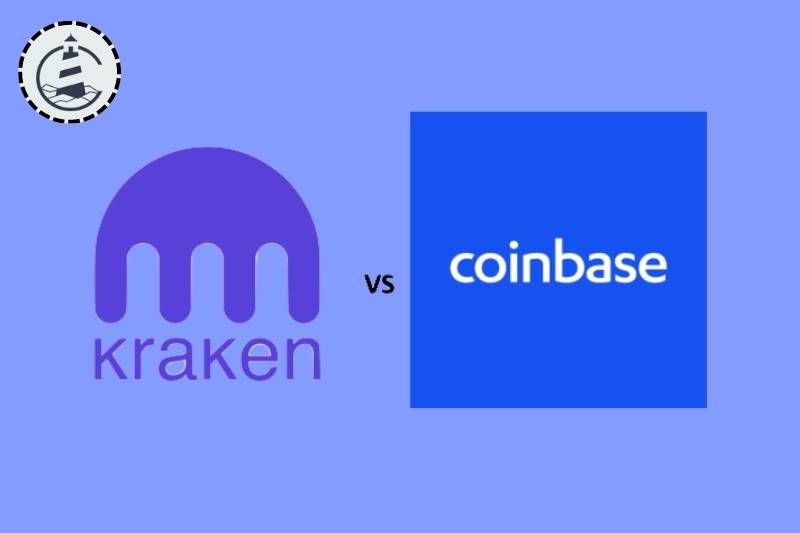
Many traders utilize margin trading to leverage their capital to produce greater returns. The greater the leverage, the greater the trading power for users.
Historically, Coinbase didn’t offer margin, but in early 2020 they introduced this new capability. This new feature offers traders up to 3x leverage, which isn’t much but will do for beginners and those getting their feet wet. The Kraken interest rates for margin trading is a fixed, annualized interest rate of 8% for both open and filled orders.
Yet, margin trading is only available to Coinbase users in 23 US states, limiting its availability. Additionally, only traders deemed “active” by the crypto exchange will have access to this new feature.
Kraken offers margin trading with up to 5x leverage, which isn’t the best in the industry but should suffice for many traders. The exchange’s fees for margin trading range from 0.01%-0.02% for opening a position and a similar rollover fee for maintaining a position every 4 hours.
Verdict: Because Coinbase is so new regarding margin trading, it’s hard to know how the exchange’s policies might change over time. Also, Coinbase margin trading may not yet be available for you, depending on your locality.
For now, Kraken is the better option for margin traders, as it has a higher leverage and a better fee structure for those making quick trades. But keep an eye on margin trading from both crypto exchanges in the coming years, as there is no telling what new margin features the exchange might roll out.
How Do They Compare on Liquidity?
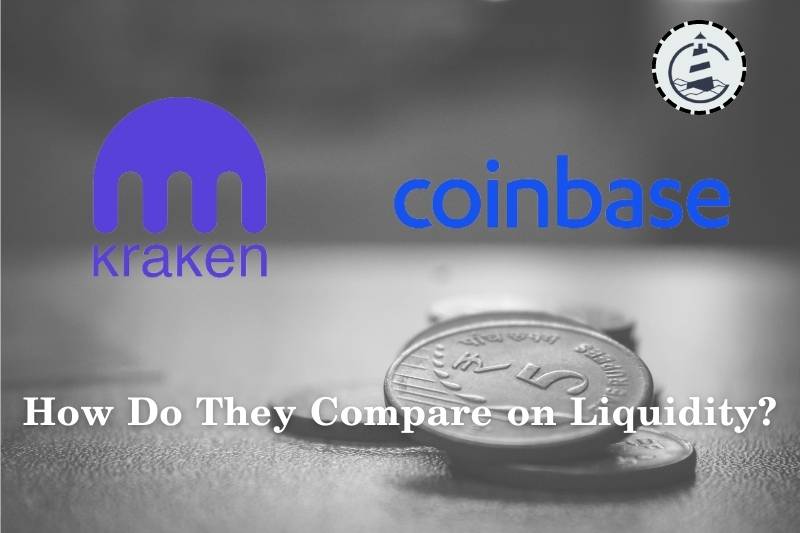
According to CoinMarketCap’s scoring of exchange liquidity — which takes into account the size and spread of an order book, price slippage, and other factors — Coinbase Pro comes in with a score of 405 while Kraken has a slightly higher, but similar score of 412. Seeing as these numbers frequently change, the difference between the two seems negligible.
Both Kraken and Coinbase platforms have similar trading volumes of nearly $500 million daily, although Kraken has significantly more trading pairs (214) than Coinbase Pro (99).
The majority of Coinbase’s trading volume comes from two crypto pairs: BTC/USD (37% of exchange volume) and ETH/USD (12% of exchange volume). Kraken’s exchange volume is similarly centralized around Bitcoin and Ethereum but with Euro trading pairs. The highest volume trading pairs are XBT/EUR (19%), XBT/USD (15%), ETH/USD (8%), and ETH/EUR (4%).
Verdict: Both exchanges provide some of the best liquidity in the industry and have similar metrics to prove it. However, traders that need more exposure to European markets or a greater number of exhanging pairs will want to go with Kraken, as it provides much more liquidity in those areas.
Who Provides a Better User Experience?

As Coinbase CEO Brian Armstrong said, “Coinbase is for everyone; Coinbase Pro is for experts.” Therefore, the company has included several trading tools experts will need in Coinbase Pro, making it a slightly more sophisticated interface.
Traders can view basic charts, order books, and other trading tools. In-depth trade history and the open order book are at the tip of your fingers on Coinbase Pro, making it easy to visualize the current state of any cryptocurrency market.
However, this might be too much information for beginners just starting, as the Pro interface might seem overwhelming. The traditional Coinbase app is still useful for its easy-to-use design and wallet capabilities. One plus is the Coinbase Pro mobile app, which is a positive for the exchange. It’s received overwhelmingly positive reviews due to its ease of use.
As for Kraken, the exchange’s interface has often been called “old-school,” meaning it doesn’t have the sleek look of Coinbase Pro. While the exchange platform isn’t pretty, it still does the job and has many features an advanced trader might need. Kraken uses XBT as the ticker symbol for Bitcoin, a divergence from the commonly used BTC symbol, making for a potential source of confusion.
The Kraken app — called Kraken Pro — is one of the better features of the exchange. It is highly reviewed, with a 4.5/5 rating on Google Play and 4.7/5 on Apple. Users report great security features, leaving them with greater trust in the exchange as a whole.
Verdict: This one comes down to personal preference, as both platforms provide a reliable and appealing experience on both desktop and mobile. You might find you enjoy the sleek and sophisticated look of Coinbase Pro, or perhaps you’re more at ease with the more old-school look of Kraken. Either way, both provide intuitive and well-conceived functionality overall.
Who Has Better Customer Service?
Coinbase Pro users have a dedicated customer support team ready and waiting to help with any questions or issues. A dedicated Coinbase Pro phone line operates from Monday-Friday, 6 am-6 pm Pacific Time.
The biggest complaint with Coinbase is the onboarding process, which can take some time to complete through additional verification steps. Once you successfully open an account, it’s likely the customer team at Coinbase will suffice.
The customer support offered by Kraken leaves much more to be desired. With over 420 reviews on Trustpilot, the exchange has a paltry 2.2/5 score (vs. 3.9 for Coinbase Pro). Common complaints include no response from client service reps and long wait times for verification.
However, it’s worth noting that their fairly robust FAQ section and online customer support documentation may resolve your issue without needing a phone call.
Verdict: Customer service complaints aren’t uncommon in this industry, and both Kraken and Coinbase have had their past issues, with long wait times often being a primary sticking point.
That said, Coinbase gets the edge in this department, as most complaints revolve around a sometimes cumbersome registration process, with most customers walking satisfied once that hurdle is cleared.
Other Things to Consider
One beef people have with Coinbase is their willingness to sell customer data to the US government — specifically the IRS and DEA. The company will profit by providing identity data to these agencies, which goes completely against the anonymity that cryptocurrencies supposedly provide.
There is speculation that Coinbase will become one of the first cryptocurrency companies to go public. This would put the company under even more scrutiny and the watchful eye of shareholders. The company was valued at about $8 billion during its last fundraising round.
While we have compared spot trading for both platforms, futures traders will be pleased to know that Kraken offers a robust futures trading platform with up to 50x leverage. Users can easily navigate spot and futures markets, making the transition seamless. Additionally, Kraken provides fiat currency trading among six different currencies and user can buy and sell crypto with their bank account, credit cards, debit cards, making it a more global option for traders.
Kraken is currently in the spotlight for potentially violating international sanctions by profiting in sanctioned countries. As a result, there is a pending lawsuit filed against the exchange, which also highlights employee harassment and falsifying legal documents.
These only allegations have yet to be verified in a court of law. However, if these allegations are true, they would violate multiple laws and regulations in the United States, for which the penalty is unknown.
Conclusion
The decision between Coinbase and Kraken comes down to priorities and preferences. Do you prioritize trading features such as spot trading, futures trading and low fees? If so, Kraken is the choice for you. Or, maybe security like cold storage and a great user interface matter to you most, making Coinbase the obvious choice. Moreover, the features of purchasing digital assets with bank account and credit card also can be a huge factor for your choice.
Also, it’s worth noting that you don’t have to choose just one exchange to buy Bitcoin. And instead, they can open accounts on both exchanges to receive multi-dimensional benefits. Doing so will require you to closely monitor exchanges’ pricing, volume, and order book.
Disclaimer: The information provided in this article is not investment advice from Cove Markets. Cryptocurrency investment activities are yet to be recognized and protected by the laws in some countries. Cryptocurrencies always contain financial risks.
Coinbase Pro vs Robinhood & Which is Better for Buying Bitcoin?
Why You Should Buy Bitcoin on Coinbase Pro and not Coinbase? Best Answer 2023
TOP 12 Best Altcoins To Trade & HODL In 2023: Best Trading Coins For Beginner

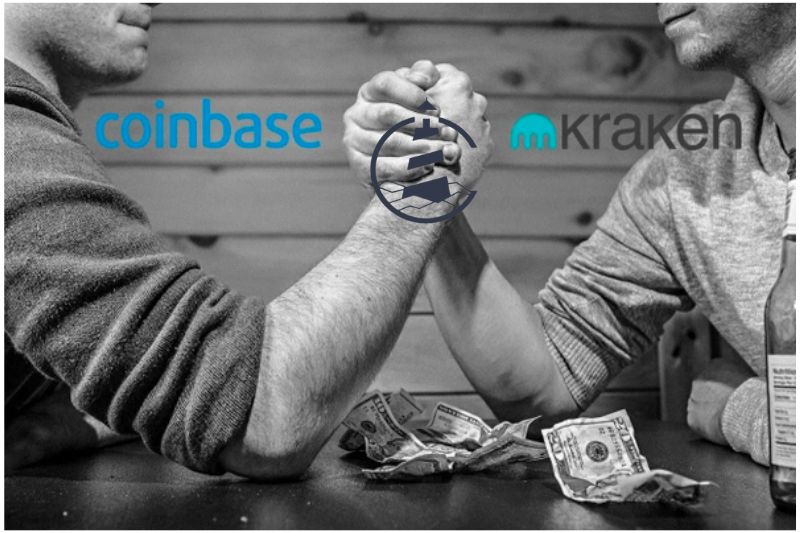
Pingback: Cryptocurrency Arbitrage: A Guide to Trading Strategies - covemarkets.com
I think Coinbase is a better choice for long-term storage of cryptocurrencies. Kraken is better for trading.